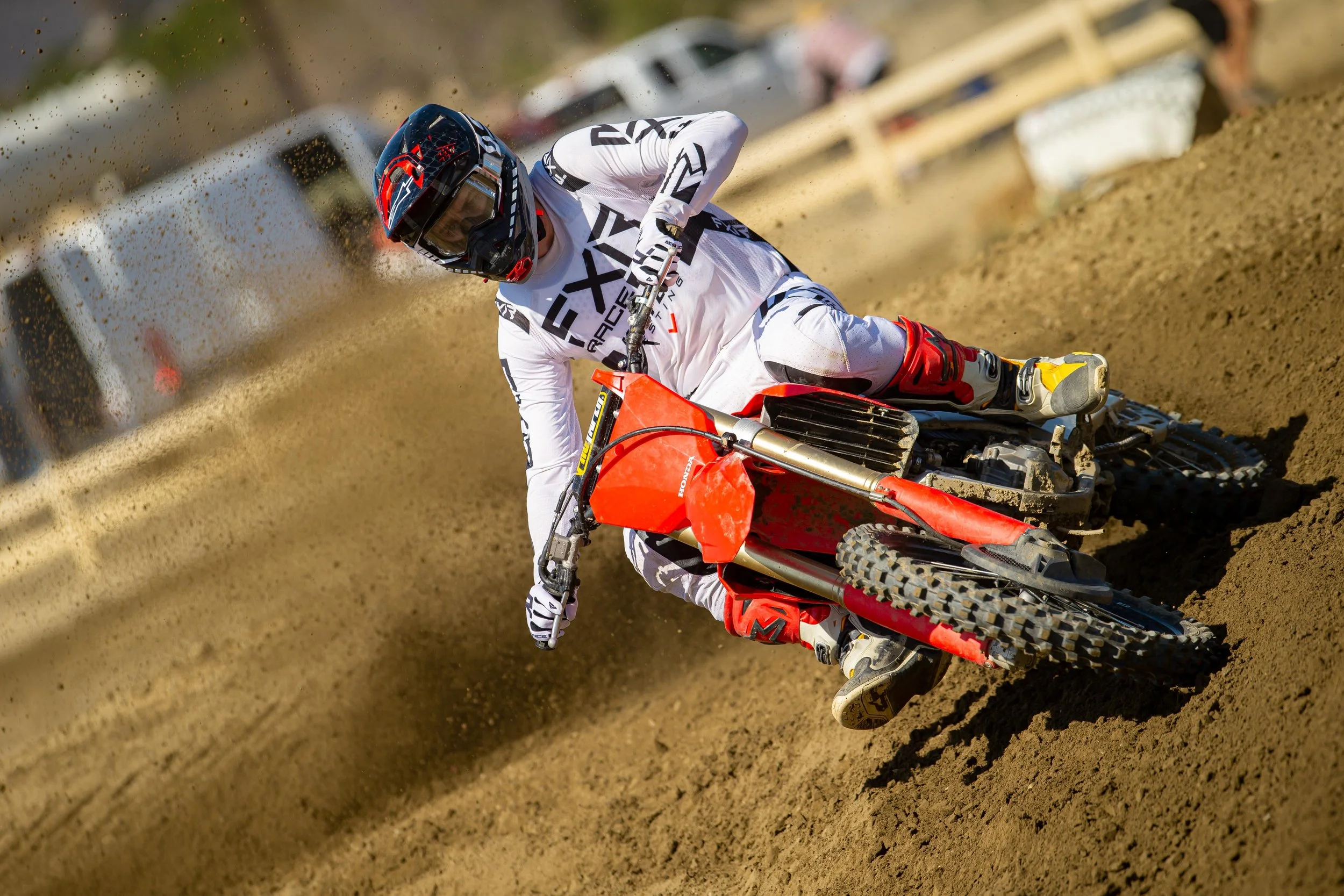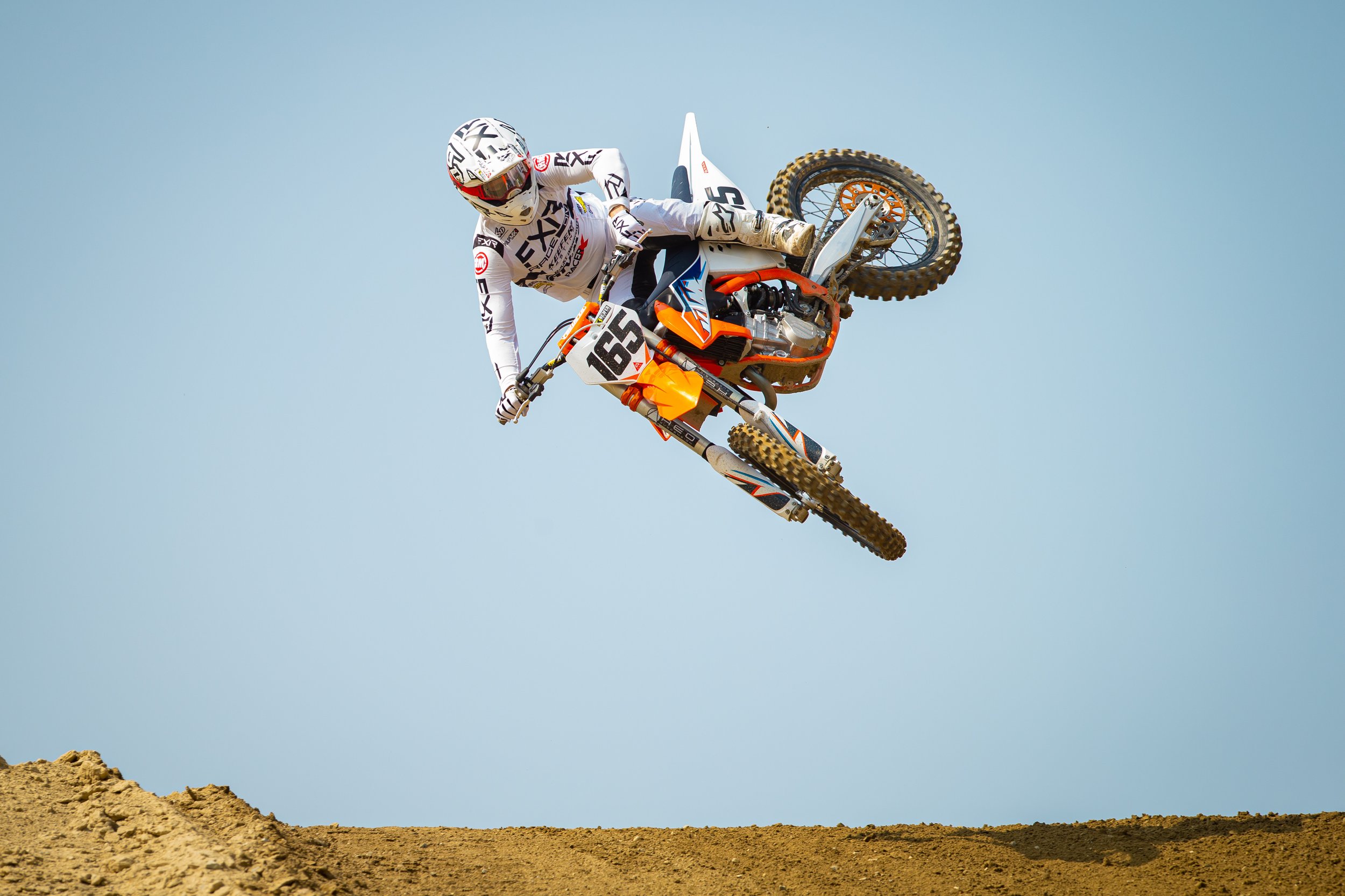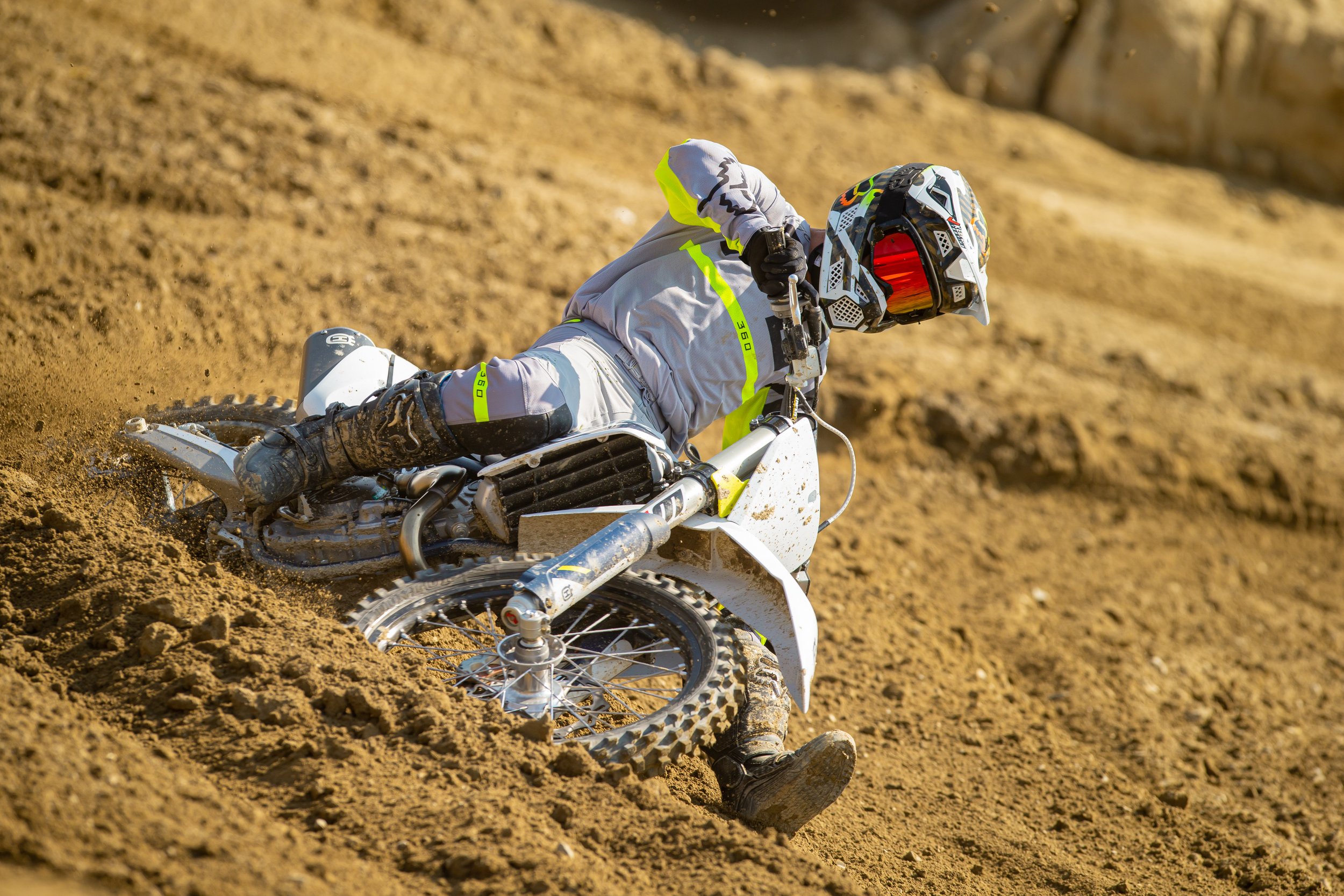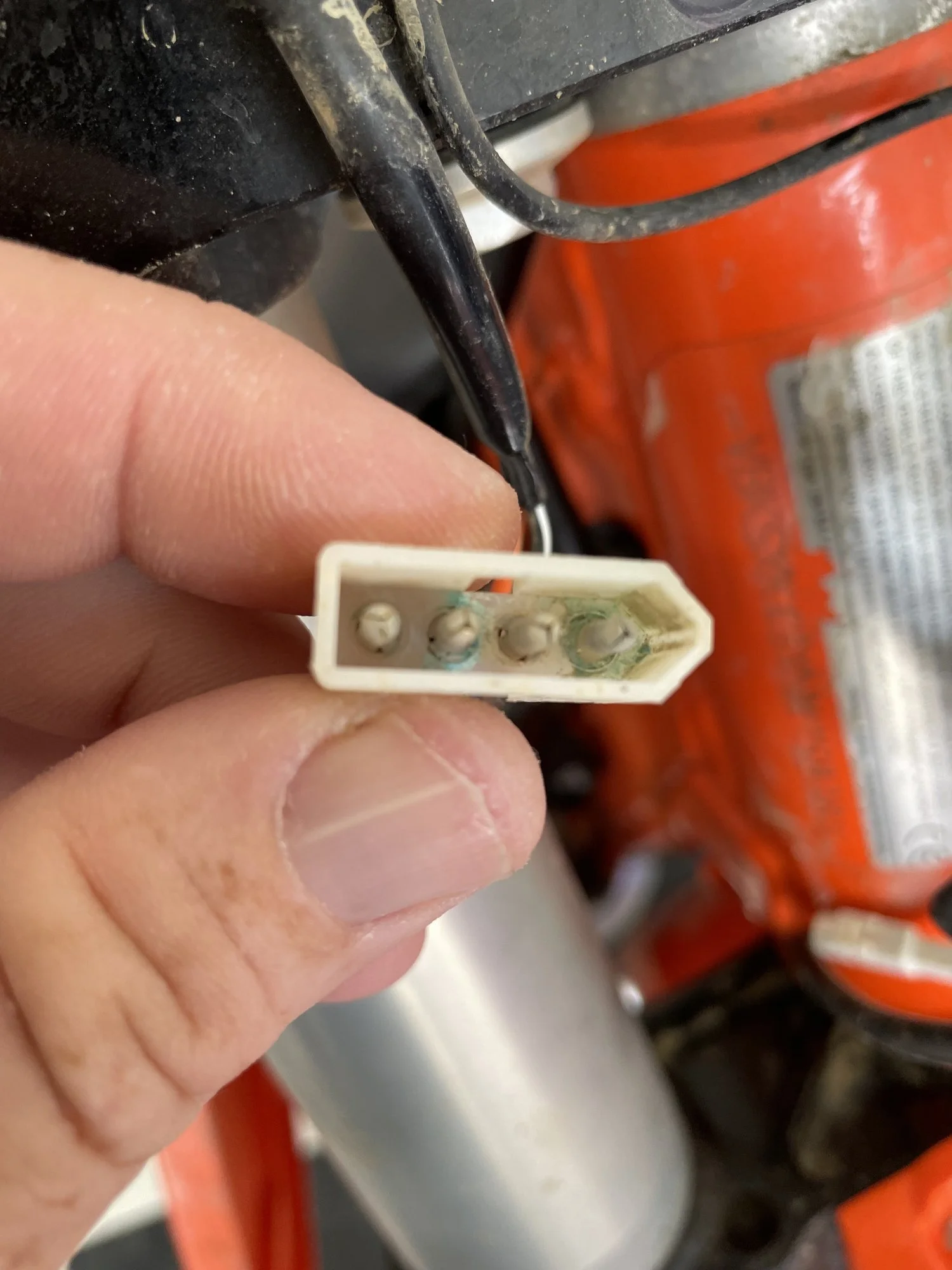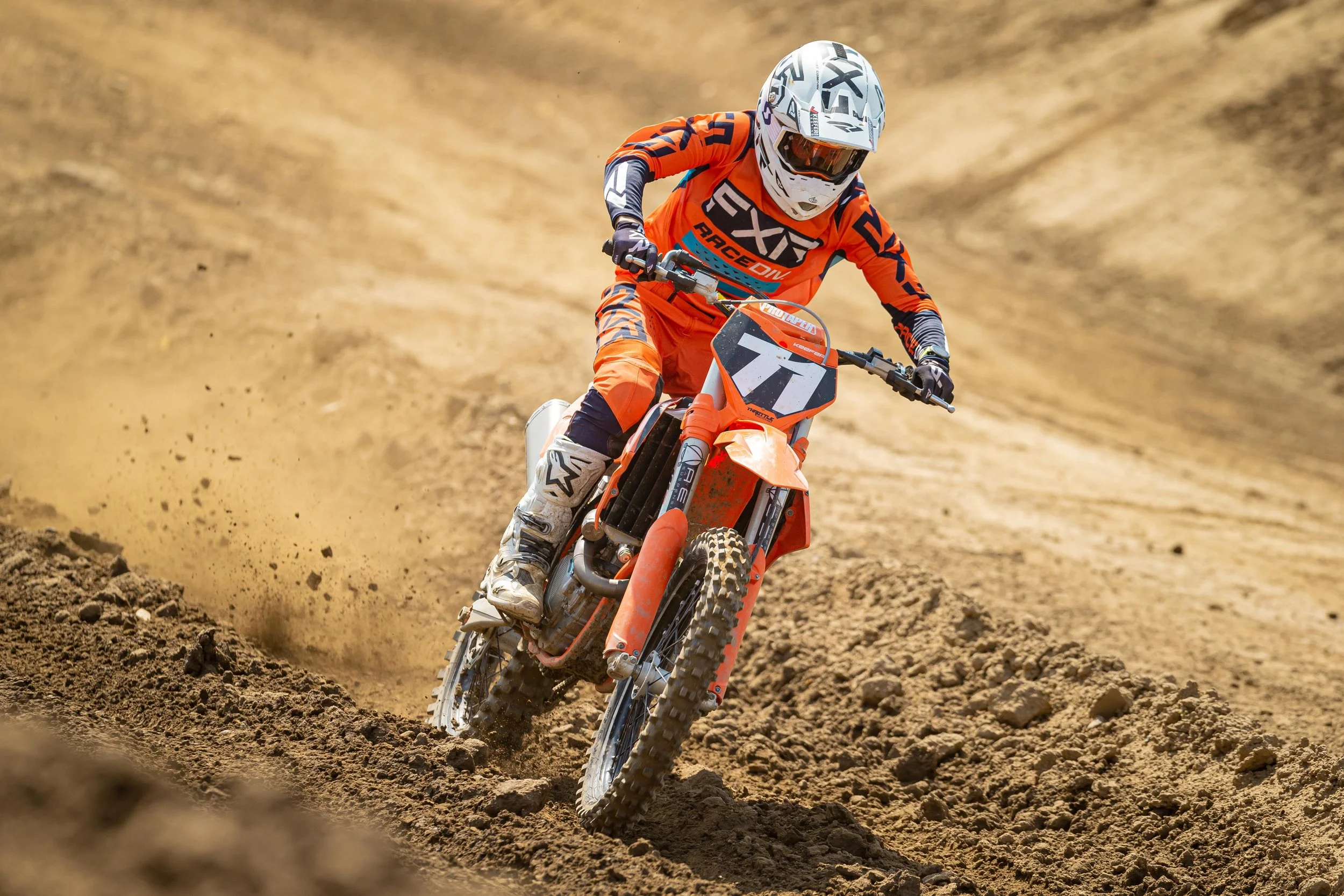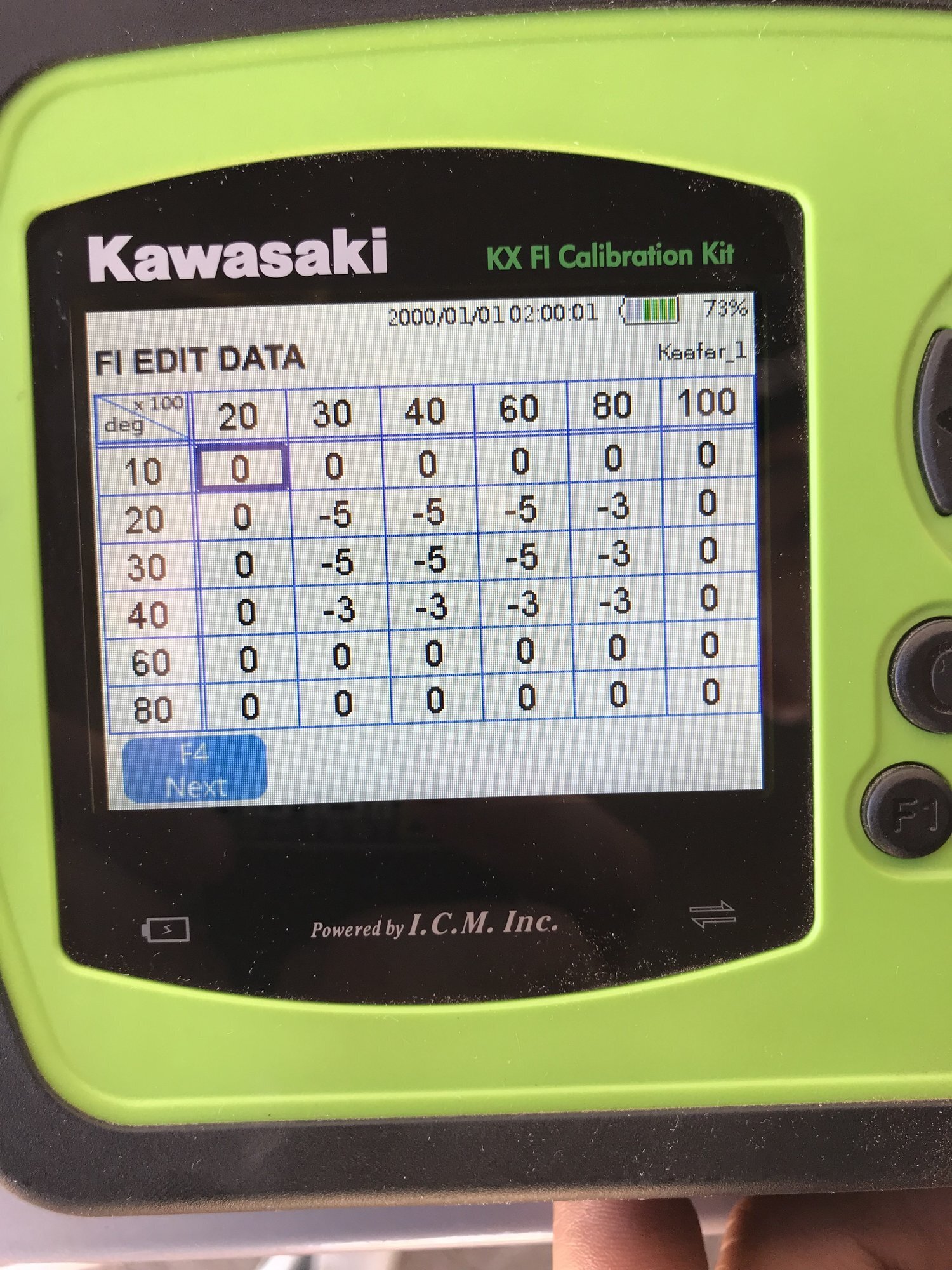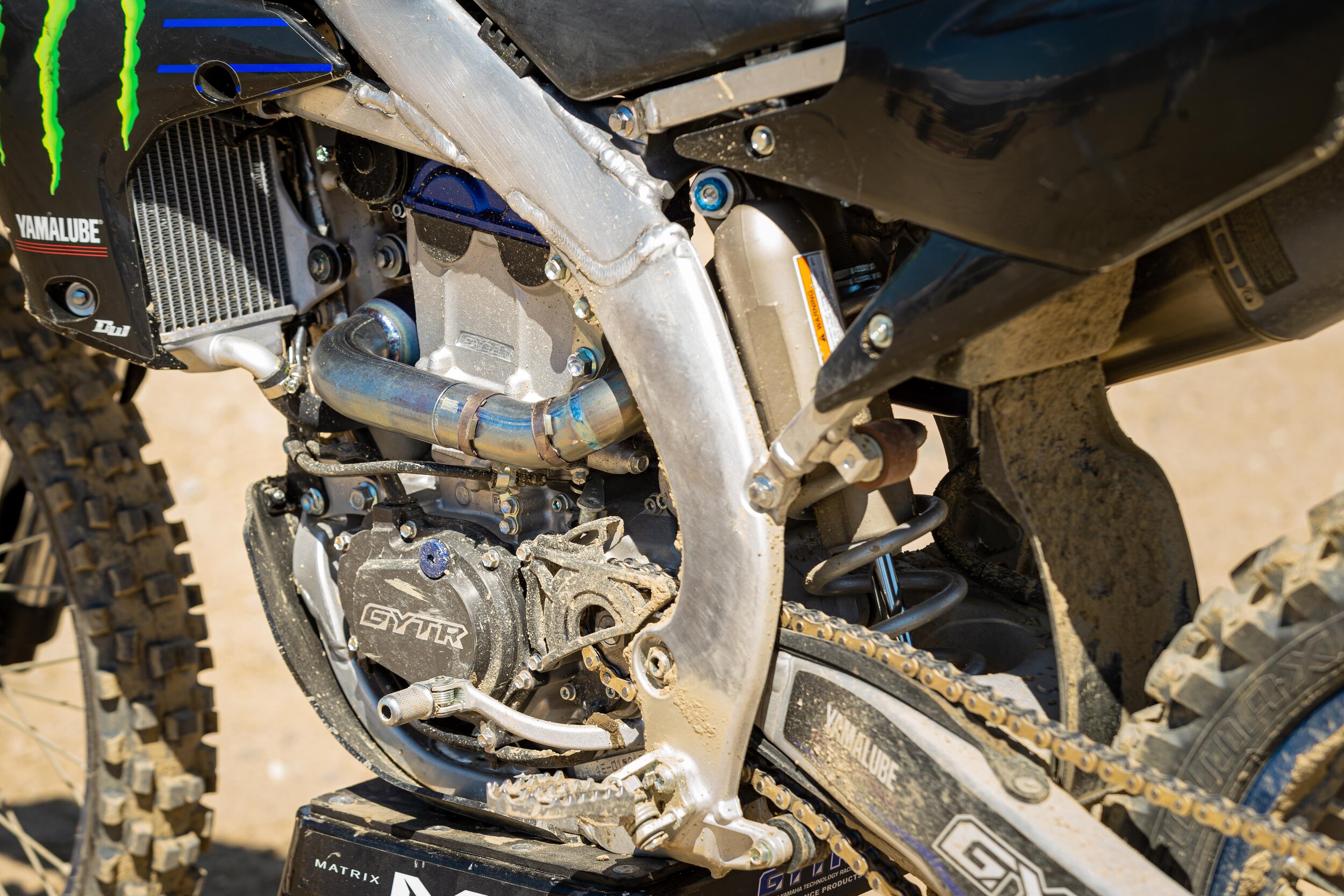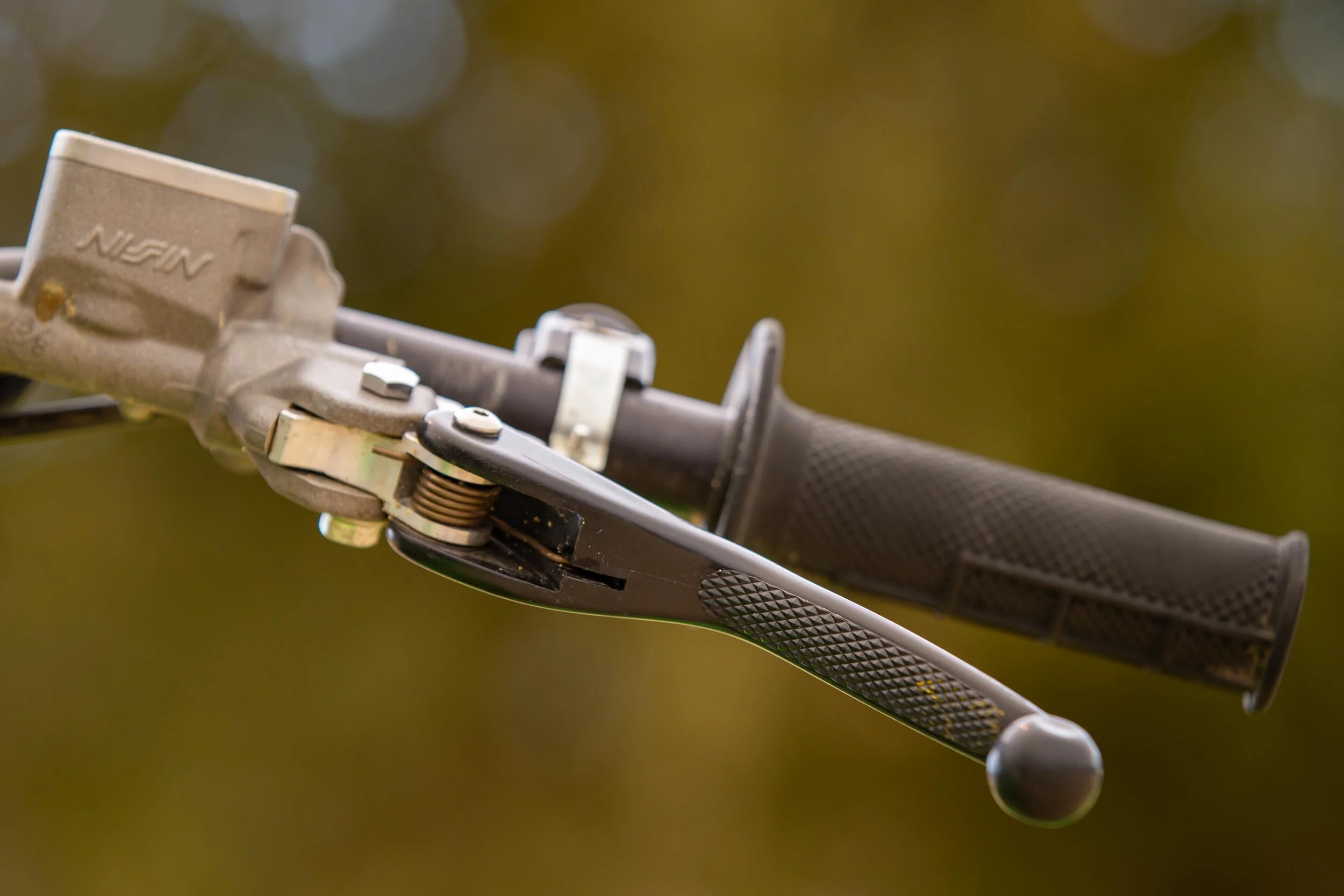Written By: Preston Jordan
Disclaimer: The only thing with two wheels that I am proficient with is a household dolly. Do not take my words as gospel, I’m just a fortunate, below-average rider who was given an opportunity to tell you all about my experiences. Take it or leave it, this is my experience and opinion… nothing more, nothing less! We all know how weird people can get when faced with a difference in opinions and beliefs.
Get yourself a beverage and delicious snack because this is going to be a long-winded, overly detailed article about my journey back into motocross on a bike that I discovered I actually never knew anything about. I guess I should start with a little history… The last bike that I owned was a 2014 KX450f, which was a great bike, zero complaints. In fact, I loved Kawasaki’s so much that I bought three KX450fs in a row and never really bothered to give any other manufacturer a chance to take my hard-earned money. I spent years of my life messing around at local tracks on weekends with friends, but as time passed, things changed, and my passion for riding began to fizzle out. After just about all my regular moto friends either got hurt or started families and quit riding, the last bike that I owned basically just collected dust in my buddy Bryan Buchanan’s (co-owner of ERA Moto) garage. After a while of not having anyone to ride moto with anymore, riding by myself became stale and boring, so rides became few and far between.
After Bryan loaned me an extremely outdated 1990’s mountain bike and took me out to a local MTB trail network, I quickly became hooked. This newfound sport quickly became an obsession, resulting in a quick transition from motocross to mountain biking. Not long after that first MTB ride, I decided that it was time to take the final step and sell my hooked up KX450f while it was still worth any bit of money. After pocketing a decent amount of cash for my bike, I used some of the proceeds to help get my first mountain bike in February of 2018. I knew that I probably wouldn’t be able to afford to get a new bike ever again, but I decided to take the plunge anyway. Since then, I have spent just about every free weekend of my life riding my mountain bike and I am still just in love with MTB as I was after that first ride at Greer Ranch in 2018. Mountain bikes helped fill that void that grew when riding motocross fell out for me. In fact, I almost immediately lost interest in riding motocross and didn’t put much effort into getting back out riding.
The last time I rode a dirt bike was at the 2019 KX450f media intro at Pala Raceway in June of 2018. I literally did a lap or two on the vet track then handed the bike right back to the people at Kawi… I thought that ride was it for me, the end of my time riding motocross. I didn’t really enjoy it that much because I just felt extremely uncomfortable. Fast forward to December 2021; I got a FaceTime call from Keefer stating that he had a girl that he wanted to hook me up with. Anyone who knows Keefer would understand why I took the comment completely seriously. I immediately tried to shut the entire situation down, thinking I was getting tossed into an awkward situation that would make some other random stranger just as uncomfortable. He told me that girl he was talking about was sitting in his garage, so he walked outside to give me a glimpse… What was sitting there waiting for me was a beautiful new 2022 RMZ450. After a brief talk about what he expected out of me if he gave me the opportunity to borrow the bike, we discussed a timeframe to come by and grab it. Just a week or two later and I was on my way up to Hesperia to take temporary possession of a dirt bike for the first time in a few years; to say that I was excited to have the opportunity to ride again is an understatement.
Up until this point, I had only ridden a Suzuki one time before, which was right before the Keefer Inc. 450 shootout back in 2017. My initial impression of the 2018 RMZ450 back then was that it was incredibly stiff! I could feel every single bump on a somewhat smooth Racetown 395/Sunrise MX track, which led to me hopping off it prematurely. To be fair, I also immediately noticed that it turned like an absolute dream. No matter how far you leaned it over, it never felt like dead weight that wanted to just continue falling to the ground. Suzuki’s have long been known for their flawless cornering capabilities, but outside of that, a lot of people have negative things to say. I never gave the bike a chance to see if some of the hate they got was warranted, and that lies solely on me.
I really didn’t know what exactly to expect when I picked the bike up from Kris, but to be honest, I wasn’t expecting too great of things out of it for the rough trail riding here in the desert based off the stereotypical Suzuki comments that I always saw across social media and my single experience with the rigid frame when I rode it at Racetown 395/Sunrise MX. If it felt a bit harsh on the smooth track that I rode it on, I figured that I wouldn’t be able to handle it in the open desert. Regardless, I was offered a new bike to ride so who am I to have a preference of what bike I’m being handed to ride? I’m a below-average rider who was given an insane opportunity so Keefer could have given me a Cannondale MX400 (they make incredible mountain bikes nowadays, btw) and I still would have been just as happy and appreciative. I was loaned a current year, fresh 450 and that had me extremely excited to be able to ride again.
After Keefer got me set up with the bike and some gear, I was just about ready to get out and ride. I knew (and still know) that I had no business on a track, so I decided to keep it local and ride trails where I live to try to get somewhat comfortable again. I still hope to ride Cahuilla MX again before Suzuki or Keefer asks for this thing back, but I have no interest in rushing to get back out there, only to get myself or someone else hurt because I had no business out there yet in the first place. I hit a local motorsports store where I live to get the rest of what I needed so within days, all that was left was for me to do was ride the thing.
My first ride back was an interesting one, to say the least. I was surprised at how foreign it felt! A few years off had me feeling like a complete beginner all over again. My braking points were embarrassing, my balance was bad, I was staring at the front wheel the entire time, etc. Not to say that I wasn’t doing that when I used to ride a lot, but man did I feel out of sorts. I knew it would be bad, but I had no idea it would be this bad. Regardless, I knew that only time would help fix this mess, so I soldiered on for more local trails to try to dust off some of the endless cobwebs.
As soon as I got onto a familiar trail, I decided to open the bike up. To my surprise, I discovered how quick the Suzuki 450 is. I wasn’t expecting the bike to get up to speed as rapidly as it did, and I did not remember my last 450 feeling this quick! I decided that I needed to back off a bit and get more used to the bike before I found myself at the front door of a local ER. I spent the rest of the ride putting around and learning some of the characteristics of this uncomfortably speedy 450.
After a few more rides on the RMZ, I got more comfortable with it and started to figure out why I initially felt the way that I did about the speediness of the bike. The power delivery of the Suzuki is laughably smooth! When you crack the throttle, it doesn’t just yank out from under you and unsettle your body weight… the power rolls on gradually, which helps keep the rear wheel tracking. I wanted to see if the bike felt this way throughout the entire range of the motor, so I would purposely lug around in a higher gear then drop the clutch and roll on the throttle. Every time, the bike would hook up and take off without the rear wheel feeling like it was ever breaking free. Insane traction out of a motor this beastly in stock form! For someone like me who hasn’t been on a bike in years, the incredibly smooth characteristics of the motor was more than welcomed and a breath of fresh air.
If a smooth motor isn’t your thing, there’s good news! Although not solely unique to only Suzuki’s, I appreciate the ability to swap out couplers and/or do your own custom mapping on the RMZ450 using a simple phone app to tweak the motor to your own special preferences. This comes in handy when you want to set up maps for specific tracks that you ride, or if you don’t like the feel of the motor in its stock form, you can change the delivery of power to suit your needs. The ability to customize is always nice and the simplicity of using an app makes it that much cooler. Personally, I’ve been riding the bike with the stock black coupler, and it is easily more than enough for me right now. If I still have the bike for a while and feel it might be fun to mess around with after I feel comfortable riding again, I may mess with some of the tuning someday, but for now, the motor feels incredible in stock form! Zero complaints.
The bike feels extremely comfortable to sit on and I felt at home with most of the ergonomics just about immediately. The only major slip up that I had was with the controls… more specifically, the brakes. I didn’t think it would be an issue, but I almost earthed myself more times than I’d like to admit from grabbing a fistful of front brake, mistaking it for the rear brake like my MTB! After about 5 times of almost losing the front end, I started to figure it out. The bars are also quite a bit narrower than my mountain bike bars, but I was able to adapt to that relatively quickly. I didn’t get the feeling that I was sitting on the bike as much as I did sitting in the bike, if that makes sense; more sitting in a pocket than just on a flat bike. This feeling of comfort coupled with the incredible cornering characteristics of the bike really makes for an easy riding bike! Truly, just about everything in stock form felt almost perfectly set up for me, helping lessen the uneasiness of me feeling like I was about to die every other second.
Don’t get me wrong, although the bike is extremely comfortable in stock form, not everything is rainbows and sunshine for me. There were a few negatives that I noticed, but they’re small and nitpicky so likely a nonissue for the average rider. The biggest negative that I felt right off the bat was the twitchiness of the front end in small chop and braking bumps. The front end felt very nervous in small and successive bumps, but oddly felt nice and composed in larger rollers and whoops. I figured this out the hard way when I went to pin it through a rough straight and almost had the bars yank out of my hands, like complete speed wobbles. I can’t fault the inherent characteristics of the Suzuki for this issue, as I figured that it was simply a setup issue with the spring fork. I went riding with a local buddy of mine, Zack, who has learned a ton about suspension over the years and recently started doing his own valving, so after some discussion, we made some very minor adjustments to try to get me more comfortable. After just a few clicks of rebound adjustment up front, the bike felt night and day better, although it still gets a little nervous in similar conditions from time to time. The front end feels way more manageable after those few clicks of adjustment, and I may dial more things in later down the line, depending on how long I have the bike.
If you’re willing to take the time to set your bike up correctly for yourself, I’m sure what I was feeling would be a nonissue or something that could easily be fixed with a simple revalve from your preferred suspension shop. Again, I will say that although I did have an issue with successive small chop, the suspension felt pillowy soft through everything else. I’ve had nicely valved suspension on previous bikes, and none felt as comfortable and predictable as the stock suspension on this thing does. If put in words, the only way that I can describe it is an old Cadillac… it soaks everything up well!
Another personal gripe is how thin the bike feels around my knees. I know that most people like a thinner bike because it feels more nimble and more maneuverable, but I felt that this bike was a just a wee bit too thin for my liking, making it quite a bit harder for me to grip the bike. I feel like the only thing I can do to grip the bike is always squeeze tightly with my ankles, since the bike is widest at the cases, making it a bit more difficult to grip the seat with my knees unless I turn my toes way in for an unnatural feel. This may be another nonissue though since I sold my knee braces a while back and am currently just using knee pads. If I currently wore knee brace, this would likely be unnoticeable. I plan to get knee braces in the somewhat near future so I might be singing a different tune soon. These last few little nitpicks were my only complaints… I might discover more in the future, but so far everything else has been solid.
So, it has been a few weeks since I’ve started riding again and it has definitely been a bit of an eye opener. I am still hilariously bad at riding a dirt bike and I am absurdly sore since tons of my muscles haven’t been worked this hard in years, but I am enjoying every single bit of getting back into it! Even though I am still laughably bad at riding anything two wheels, I feel like being on mountain bikes this entire time has helped the transition back into dirt bikes. Things that I have learned from mountain bikes have helped me with riding a dirt bike and made things not so foreign. On the same note, I feel like riding a dirt bike will absolutely help me with riding a mountain bike. When the time comes to hand the RMZ450 back over, I feel like I will have gained a lot from the opportunity!
To sum this overly and unnecessarily lengthy article up, the Suzuki is a fantastic bike, and not just for people getting back into the sport like I am, but for anyone looking for a solid bike with a plethora of positive characteristics. I still hope to be able to ride a current model CRF450 and/or KX450 someday to see what differences I am capable of noticing, but for now, this bike has really opened my eyes to the Suzuki 450’s capabilities. I can admit that after combining my first experience riding a Suzuki with all the social media hoopla, I also developed a lack of interest in trying a Suzuki for any extended amount of time. After having been able to ride this one consistently for a few weeks now, I’ve come to realize that I am the idiot that I always knew I was… this bike is honestly way better than I was expecting. I have no reason to lie to any of you naysayers… this bike is probably A LOT better than you might think it is, too.
If you’re on the cusp of grabbing a new RMZ450 but are unsure because of the comments that you read online or hear from strangers at the track, my personal suggestion is that you should probably ignore others’ opinions (mine, the stranger included) and give one a try! You never know, you may end up just as pleasantly surprised as I am. This bike has given me the itch to get back into moto and as soon as I am financially able (hopefully within this lifetime), I will be getting myself a new 450. Who knows, it might even be a Suzuki. If so, I hope to bring you more lengthy reads in the future. Thanks for the endless opportunities, Keefer!
TLDR: Suzuki’s are probably better than you might think they are, dirt bikes and mountain bikes are just about equally as fun and beneficial to each other, my entire body hurts, extreme sports are expensive.











